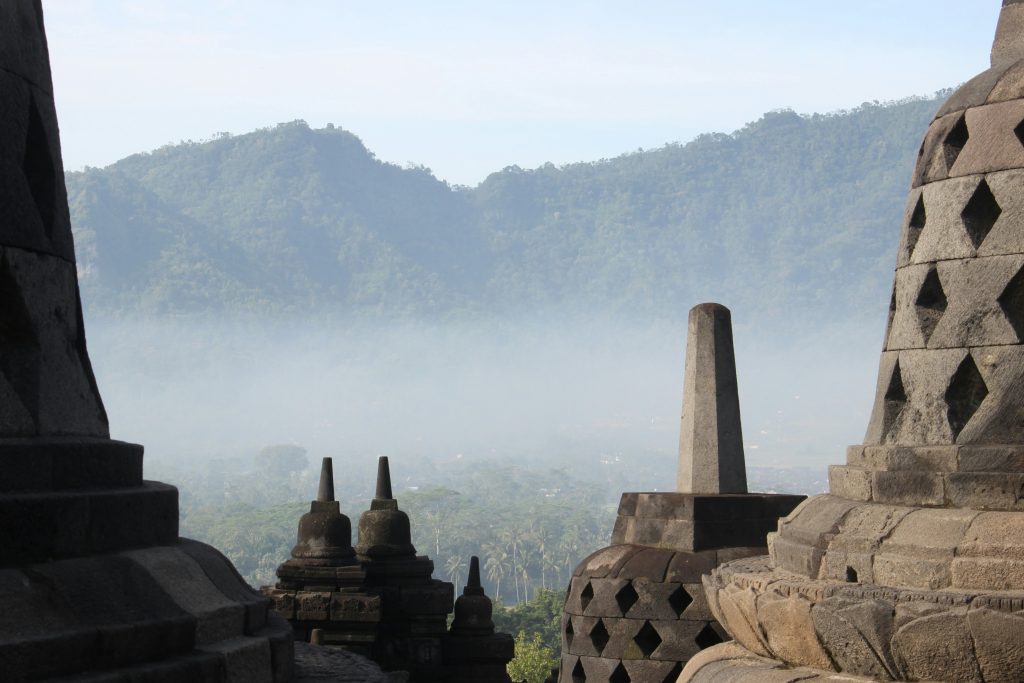Welcome to “Echoes of the Past: Historical Journeys Across Continents“!
Are you ready to embark on an extraordinary adventure through time and across the globe?
Prepare to step into the footprints of ancient civilizations, walk the same paths as legendary figures, and unlock the mysteries of bygone eras.
From the majestic ruins of Rome to the mystical temples of Kyoto, from the awe-inspiring pyramids of Egypt to the vibrant streets of Marrakech, this guide is your passport to exploring history’s most iconic landmarks and hidden treasures.
Whether you’re a seasoned history buff or simply curious about the world’s rich historical tapestry of cultures, join us as we delve into the heart of humanity’s past.
Get ready to be captivated by tales of conquest and discovery, marvel at architectural wonders, and immerse yourself in the stories that shaped our world.
Your historical journey awaits!
Definition of Historical Tourism

Historical tourism is like stepping into a time machine—it’s all about exploring places that are steeped in history and culture.
Instead of just reading about the past in textbooks, you actually get to visit these incredible places and experience history firsthand.
It’s like going on an adventure back in time, where you can walk in the footsteps of ancient civilizations, discover legendary landmarks, and uncover the stories behind them.
Whether it’s wandering through the ruins of an ancient city, marveling at centuries-old architecture, or learning about the traditions of indigenous cultures, historical tourism offers a chance to connect with the past in a meaningful and immersive way.
So, if you’re someone who loves exploring the rich tapestry of human history, historical tourism is definitely for you!
Importance of Exploring Historical Sites

Exploring historical sites isn’t just about taking cool vacation photos—it’s about connecting with our roots and understanding where we come from.
These places are like time capsules that hold the stories of our ancestors, their triumphs, struggles, and innovations.
By visiting them, we can gain a deeper appreciation for different cultures and traditions, broadening our perspective on the world.
Plus, it’s a chance to learn from the past, whether it’s understanding how ancient civilizations thrived or learning from their mistakes.
Historical sites also help preserve our heritage for future generations, ensuring that these important stories are passed down and not forgotten.
And let’s not forget the sheer awe and wonder that comes from standing in the presence of centuries-old monuments and landmarks—it’s a humbling reminder of the passage of time and the resilience of human creativity.
Overview of the Guide’s Purpose

This guide is your ticket to an unforgettable journey through time and across continents.
Its purpose is to inspire and guide you as you embark on historical adventures around the world.
Whether you’re a history enthusiast eager to explore ancient ruins or a curious traveler looking to learn more about different cultures, this guide has something for you.
From the majestic pyramids of Egypt to the charming streets of old European cities, each chapter will take you on a virtual tour of iconic landmarks and hidden gems.
Along the way, you’ll uncover the stories behind these historical sites, gaining a deeper understanding of the people and events that shaped our world.
So, get ready to pack your bags and dive into the fascinating world of historical tourism!
Europe: Tracing Ancient Civilizations
Europe: Tracing Ancient Civilizations – where the echoes of the past resonate through cobblestone streets and towering monuments, inviting you to step back in time and uncover the secrets of antiquity.
Greece: The Birthplace of Western Civilization

Greece: The Birthplace of Western Civilization is a historical treasure trove waiting to be explored.
From the vibrant streets of Athens to the tranquil shores of its islands, Greece offers a rich tapestry of ancient wonders and modern delights.
1. Athens: Acropolis and Ancient Agora
-Acropolis:

Perched atop a rocky outcrop, the Acropolis is the crown jewel of Athens, home to iconic structures like the Parthenon, Erechtheion, and Propylaea.
Marvel at the breathtaking architecture and panoramic views of the city below.
– Ancient Agora:

Dive into the heart of ancient Athenian life at the Ancient Agora, where philosophers once roamed and democracy was born.
Explore the ruins of temples, stoas, and civic buildings, and imagine bustling marketplaces and political debates.
2. Delphi: Oracle of Apollo
– Sanctuary of Apollo:

Nestled on the slopes of Mount Parnassus, Delphi was the most important religious site in ancient Greece.
Visit the Temple of Apollo, where the legendary Oracle once dispensed cryptic prophecies, and take in the majestic beauty of the surrounding landscape.
– Delphi Archaeological Museum:

Delve deeper into Delphi’s history at the museum, which houses an impressive collection of artifacts, including the famous Charioteer of Delphi and the Sphinx of Naxos.
Greece’s ancient sites offer a window into the birth of Western civilization, providing valuable insights into art, philosophy, and governance that continue to shape our world today.
Whether you’re a history buff, an art aficionado, or simply a curious traveler, a journey through Greece’s storied past is sure to leave a lasting impression.
Italy: The Cradle of Renaissance

Italy: The Cradle of Renaissance beckons with a fusion of artistic splendor, architectural marvels, and culinary delights.
Let’s delve into the heart of this cultural epicenter:
1. Rome: Colosseum and Roman Forum
– Colosseum:

Step into the arena where gladiators once battled and emperors entertained the masses.
Marvel at the colossal amphitheater’s architectural grandeur and imagine the roar of the crowds echoing through its corridors.
– Roman Forum:

Wander through the ancient civic center of Rome, where temples, basilicas, and government buildings once stood.
Highlights include the Temple of Saturn, Arch of Septimius Severus, and the Curia Julia, where the Roman Senate convened.
2. Florence: Uffizi Gallery and Ponte Vecchio
– Uffizi Gallery:

Immerse yourself in the artistic legacy of the Renaissance at the Uffizi Gallery, home to masterpieces by Michelangelo, Botticelli, and Leonardo da Vinci.
Admire iconic works like Botticelli’s “The Birth of Venus” and marvel at the gallery’s stunning architecture.
– Ponte Vecchio:

Cross the iconic Ponte Vecchio, Florence’s oldest bridge, lined with charming shops selling jewelry, art, and souvenirs.
Take in panoramic views of the Arno River and the city skyline, and soak up the romantic ambiance of this historic landmark.
Italy’s Renaissance heritage is a testament to human creativity and innovation, offering a glimpse into a golden age of art, architecture, and intellectual pursuit.
Whether you’re strolling through ancient ruins in Rome or admiring masterpieces in Florence, Italy’s rich cultural heritage promises an unforgettable journey through time.
READ MORE: Getting Ready for Milan: What To Know Before You Go
United Kingdom: Landmarks of British History

United Kingdom: Landmarks of British History invites you to immerse yourself in the rich tapestry of the nation’s past.
Here are two iconic landmarks not to be missed:
1. London: Tower of London and British Museum
– Tower of London:

Immerse yourself in over a thousand years of history at the Tower of London, a UNESCO World Heritage Site.
Discover its role as a royal palace, fortress, and infamous prison, home to the Crown Jewels and tales of intrigue and execution.
– British Museum:

Journey through millennia of human civilization at the British Museum, home to a vast collection of artifacts from around the world.
Marvel at treasures like the Rosetta Stone, Egyptian mummies, and the Elgin Marbles, each telling stories of ancient cultures and civilizations.
Stonehenge: Mysteries of the Neolithic Era
– Ancient Wonder:

Unravel the mysteries of Stonehenge, an ancient monument that has captivated humanity for millennia.
Marvel at the towering stone circles and ponder their significance in Neolithic society.
– Visitor Center:

Explore the newly renovated visitor center to delve deeper into the history and archaeology of Stonehenge.
Learn about recent discoveries and theories surrounding this enigmatic site.
These landmarks offer a captivating glimpse into the United Kingdom’s rich history, from its royal heritage in London to the ancient mysteries of Stonehenge.
Each site tells a story of the people who shaped the land and left their mark on its landscapes and culture.
Asia: Discovering Millennia of Culture

Asia: Discovering Millennia of Culture – where ancient traditions and modern marvels intertwine, inviting you on a journey of exploration and enlightenment through the continent’s diverse landscapes and rich heritage.
China: The Great Civilization of the East
Let’s delve into the majestic history of China, often referred to as “The Great Civilization of the East.”
With its ancient landmarks and profound cultural heritage, China offers a mesmerizing journey through time:
1. Beijing: Forbidden City and Great Wall
– Forbidden City:

Step into the heart of imperial China at the Forbidden City, a sprawling palace complex that served as the seat of power for centuries.
Explore its ornate halls, intricate courtyards, and imperial gardens, and marvel at the exquisite architecture of this UNESCO World Heritage Site.
– Great Wall:

Embark on a once-in-a-lifetime adventure along the Great Wall of China, one of the most iconic structures in human history.
Traverse its ancient battlements, winding through rugged mountains and lush landscapes, and soak in panoramic views that stretch as far as the eye can see.
2. Xi’an: Terracotta Army and Ancient City Wall
– Terracotta Army:

Witness the awe-inspiring Terracotta Army, a vast collection of life-sized clay soldiers guarding the tomb of China’s first emperor, Qin Shi Huang.
Marvel at the intricacy of the sculptures and contemplate the scale of the emperor’s ambition in the afterlife.
– Ancient City Wall:

Take a leisurely stroll or bike ride along the ancient fortifications of Xi’an’s City Wall, one of the best-preserved in China.
Admire the commanding views of the city skyline and surrounding countryside, and immerse yourself in the history of this ancient capital.
China’s rich cultural heritage and millennia-old civilization offer a wealth of experiences for travelers seeking to uncover its mysteries.
Whether you’re exploring the grandeur of imperial palaces in Beijing or standing in awe before the silent guardians of Xi’an, each destination offers a glimpse into the enduring legacy of The Great Civilization of the East.
India: Land of Spiritual Heritage
Absolutely, let’s embark on a journey through the spiritual heart of India:
1. Delhi: Red Fort and Qutub Minar
– Red Fort:

Step into the Mughal era at the Red Fort, a majestic fortress that served as the seat of power for centuries.
Explore its grand halls, intricate marble carvings, and lush gardens, and imagine the pomp and grandeur of imperial court life.
– Qutub Minar:

Marvel at the towering Qutub Minar, an iconic symbol of Delhi’s rich history and architectural prowess.
Admire the intricate craftsmanship of its sandstone walls and intricate Islamic calligraphy as you ascend to the top for panoramic views of the city.
2. Agra: Taj Mahal and Agra Fort
– Taj Mahal:

Behold the sublime beauty of the Taj Mahal, a timeless monument to love and devotion.
Marvel at its exquisite marble facade, shimmering in the light of the rising sun, and explore the intricate details of its mausoleum, gardens, and reflecting pool.
– Agra Fort:

Discover the history of Agra at the majestic Agra Fort, a UNESCO World Heritage Site that once served as the seat of the Mughal Empire.
Wander through its labyrinthine corridors, admire its stunning architecture, and soak in panoramic views of the Taj Mahal from its ramparts.
India’s spiritual heritage is woven into the fabric of its landscapes, monuments, and cultural traditions, offering a profound journey of self-discovery and enlightenment.
Whether you’re exploring the vibrant streets of Delhi or standing in awe before the timeless beauty of the Taj Mahal, each destination offers a glimpse into the soul of this ancient land.
Japan: Timeless Traditions and Modern Wonders

Let’s explore the captivating blend of timeless traditions and modern wonders in Japan:
1. Kyoto: Kinkaku-ji and Fushimi Inari Shrine
– Kinkaku-ji (Golden Pavilion):

Experience serenity at Kinkaku-ji, the Golden Pavilion, a Zen Buddhist temple adorned with gold leaf and surrounded by tranquil gardens.
Marvel at its reflection shimmering in the pond, creating a breathtaking scene that embodies the harmony of nature and architecture.
– Fushimi Inari Shrine:

Delve into the mystical world of Fushimi Inari Shrine, famous for its thousands of vermillion torii gates winding through the forested hills of Kyoto.
Embark on a mesmerizing journey through the tunnels of gates, offering glimpses of ethereal beauty and spiritual tranquility.
2. Hiroshima: Peace Memorial Park and Museum
– Peace Memorial Park:

Pay tribute to the resilience of the human spirit at Hiroshima’s Peace Memorial Park, dedicated to the victims of the atomic bombing in 1945.
Explore its poignant monuments, including the Peace Memorial Museum, cenotaph, and the iconic Atomic Bomb Dome, which stands as a symbol of hope and peace.
– Hiroshima Castle:

Step back in time at Hiroshima Castle, a reconstructed symbol of the city’s samurai heritage.
Climb to the top of the castle tower for panoramic views of the city skyline and surrounding gardens, and immerse yourself in the history and culture of feudal Japan.
Japan’s unique blend of ancient traditions and modern innovations offers a captivating glimpse into its rich cultural tapestry.
Whether you’re wandering through the historic streets of Kyoto or reflecting on the lessons of peace in Hiroshima, each destination invites you to discover the timeless allure of Japan.
Africa: Exploring Ancient Kingdoms
Africa: Exploring Ancient Kingdoms – where the sands of time reveal the majestic legacies of civilizations past, beckoning adventurers to uncover the secrets of this vast and storied continent.
Egypt: Land of Pharaohs and Pyramids

Let’s embark on a journey through the timeless wonders of Egypt, often referred to as the “Land of Pharaohs and Pyramids.”
With its awe-inspiring monuments and rich cultural heritage, Egypt offers a captivating glimpse into the mysteries of ancient civilization:
1. Cairo: Giza Pyramids and Egyptian Museum
– Giza Pyramids:

Witness the marvels of the ancient world at the Giza Pyramids, including the iconic Great Pyramid of Giza, the Sphinx, and the Pyramid of Khafre.
Stand in awe before these colossal structures, built over 4,500 years ago as tombs for pharaohs, and ponder the engineering ingenuity of the ancient Egyptians.
– Egyptian Museum:

Delve into the treasures of antiquity at the Egyptian Museum in Cairo, home to the world’s most extensive collection of ancient Egyptian artifacts.
Marvel at priceless treasures like the golden mask of Tutankhamun, intricate mummy coffins, and exquisite jewelry that offer insights into the daily life, rituals, and beliefs of ancient Egyptians.
2. Luxor: Valley of the Kings and Karnak Temple
– Valley of the Kings:

Explore the sacred necropolis of the Valley of the Kings, where pharaohs were laid to rest in elaborately decorated tombs carved into the desert cliffs.
Discover the tombs of renowned rulers like Tutankhamun and Ramses II, adorned with vibrant murals and hieroglyphic inscriptions.
– Karnak Temple:

Step into the realm of gods and pharaohs at Karnak Temple, a vast complex of temples, pylons, and obelisks dedicated to the worship of the ancient Egyptian gods.
Marvel at the grandeur of its Hypostyle Hall, with towering columns adorned with intricate reliefs depicting scenes from mythology and royal conquests.
Egypt’s ancient wonders offer a profound journey through time, inviting travelers to immerse themselves in the splendor of a civilization that flourished along the banks of the Nile.
Whether you’re marveling at the pyramids of Giza or exploring the tombs of Luxor, each site tells a story of power, legacy, and enduring legacy that continues to captivate the world.
Morocco: Moorish Architecture and Berber Culture
Let’s embark on a journey through the enchanting landscapes and vibrant culture of Morocco, where Moorish architecture and Berber heritage converge in a tapestry of beauty and tradition:
1. Marrakech: Djemaa el-Fna and Bahia Palace
– Djemaa el-Fna:

Lose yourself in the sensory overload of Marrakech’s bustling main square, Djemaa el-Fna.
Experience the kaleidoscope of sights, sounds, and smells as snake charmers, storytellers, and street vendors converge to create a vibrant spectacle that has enchanted travelers for centuries.
– Bahia Palace:

Step into the opulent world of Moroccan royalty at Bahia Palace, a masterpiece of Moorish architecture and design.
Wander through its intricately carved cedarwood ceilings, ornate tilework, and tranquil courtyards adorned with lush gardens, and imagine the lavish lifestyle of its former inhabitants.
2. Fes: Medina and Bou Inania Madrasa
– Medina:

Get lost in the labyrinthine alleyways of Fes’ ancient medina, a UNESCO World Heritage Site and the largest pedestrian zone in the world.
Explore its vibrant souks, where artisans craft intricate ceramics, textiles, and leather goods using traditional techniques passed down through generations.
– Bou Inania Madrasa:

Discover the architectural marvels of Bou Inania Madrasa, a 14th-century Islamic school renowned for its exquisite tilework, carved plaster, and intricately carved cedarwood ceilings.
Admire the harmonious blend of geometric patterns and calligraphy that adorn its walls, reflecting the spiritual and intellectual pursuits of the Islamic Golden Age.
Morocco’s rich tapestry of Moorish architecture and Berber culture offers a captivating journey through history and tradition.
Whether you’re exploring the bustling markets of Marrakech or admiring the serene beauty of Fes’ historic medina, each destination invites you to immerse yourself in the timeless allure of Morocco.
Americas: Traversing Indigenous Cultures
Americas: Traversing Indigenous Cultures – where ancient wisdom meets modern resilience, inviting travelers to explore the diverse heritage and profound legacies of indigenous peoples across the continents.
Mexico: Aztec and Mayan Legacies

Let’s embark on a fascinating journey through Mexico, where the legacies of the Aztec and Mayan civilizations continue to captivate travelers with their ancient wonders and rich cultural heritage:
1. Mexico City: Templo Mayor and National Museum of Anthropology
– Templo Mayor:

Step into the heart of ancient Tenochtitlan at Templo Mayor, the main temple of the Aztec capital.
Explore the excavated ruins of this sacred site, where offerings to the gods were made, and marvel at the intricately carved stone sculptures and artifacts that bear witness to the Aztec civilization’s glory.
– National Museum of Anthropology:

Delve deeper into Mexico’s pre-Columbian past at the National Museum of Anthropology, home to the world’s most extensive collection of Mesoamerican artifacts.
Discover treasures like the Aztec Sun Stone, Mayan jade masks, and Olmec colossal heads, and gain insights into the diverse cultures that shaped Mexico’s history.
2. Yucatán Peninsula: Chichen Itza and Tulum
– Chichen Itza:

Behold the grandeur of Chichen Itza, one of the New Seven Wonders of the World and the most iconic archaeological site in Mexico.
Marvel at the imposing pyramid of Kukulkan, the Temple of the Warriors, and the Great Ballcourt, and learn about the astronomical and religious significance of these ancient structures.
– Tulum:

Explore the coastal ruins of Tulum, perched atop cliffs overlooking the turquoise waters of the Caribbean Sea.
Wander through the well-preserved temples, palaces, and ceremonial platforms of this ancient Mayan city, and soak in panoramic views of the idyllic coastline.
Mexico’s Aztec and Mayan legacies offer a mesmerizing journey through time, inviting travelers to unravel the mysteries of ancient civilizations and immerse themselves in their rich cultural traditions.
Whether you’re exploring the vibrant streets of Mexico City or gazing upon the majestic ruins of Chichen Itza, each destination offers a glimpse into the enduring legacy of Mexico’s indigenous peoples.
Peru: Inca Heritage in the Andes
Let’s embark on an awe-inspiring journey through Peru, where the ancient heritage of the Inca civilization is etched into the rugged landscapes of the Andes:
1. Cusco: Sacsayhuamán and Coricancha
– Sacsayhuamán:

Explore the monumental fortress of Sacsayhuamán, an architectural marvel perched high above the city of Cusco.
Marvel at the precision-cut stone walls, some weighing over 100 tons, and learn about the engineering prowess of the Inca civilization as you admire panoramic views of the surrounding Andean mountains.
– Coricancha:

Discover the spiritual heart of the Inca Empire at Coricancha, once the most important temple in the Inca world.
Admire the remnants of its golden walls and intricate stonework, and learn about the significance of this sacred site in Inca cosmology and religious rituals.
2. Machu Picchu: Lost City of the Incas
– Machu Picchu:

Journey to the legendary Lost City of the Incas, nestled amidst the mist-shrouded peaks of the Andes.
Trek along ancient stone pathways, past terraced fields and ceremonial plazas, and marvel at the awe-inspiring beauty and ingenuity of this UNESCO World Heritage Site.
– Huayna Picchu:

For the adventurous traveler, hike to the summit of Huayna Picchu, the iconic peak overlooking Machu Picchu.
Take in breathtaking views of the surrounding mountains and valleys, and gain a newfound appreciation for the scale and complexity of Machu Picchu’s architecture.
Peru’s Inca heritage in the Andes offers a profound journey into the heart of ancient civilization, where the majestic ruins of Sacsayhuamán and Machu Picchu stand as testaments to the ingenuity and spiritual beliefs of the Inca people.
Whether you’re exploring the sacred sites of Cusco or marveling at the mystical beauty of Machu Picchu, each destination invites you to uncover the mysteries of Peru’s rich cultural heritage.
READ MORE: 10 Must-Visit Destinations for Adventure Seekers
Conclusion
As we conclude our journey through the diverse historical sites across continents, it’s impossible not to marvel at the richness of human history and the enduring legacy of past civilizations.
From the majestic pyramids of Egypt to the intricate temples of Japan, from the grandeur of European castles to the mystical ruins of Machu Picchu, our exploration has revealed the incredible diversity of historical sites that span the globe.
Each destination offers a unique window into the past, with its own stories to tell and lessons to impart.
The tapestry of human history is woven with threads of culture, tradition, and innovation, and these historical sites serve as tangible reminders of the civilizations that have come before us.
As we’ve witnessed the power of firsthand exploration, I urge you to seize the opportunity to embark on your own historical journeys.
Traveling not only broadens the mind but also deepens our understanding of the world and ourselves.
Whether you’re wandering the ancient streets of Rome, tracing the footsteps of pharaohs in Egypt, or marveling at the architectural wonders of Asia, each adventure promises to enrich your perspective and leave a lasting imprint on your soul.
So, pack your bags, set out on the open road, and let the wonders of history guide your path.
FAQs (Frequently Asked Questions)
1. What is the historical definition of journey?
A: Historically, a journey is defined as traveling from one place to another, often over long distances, for exploration or purpose.
2. What is history journeys?
A: History journeys refer to explorations or travels that have significantly impacted human understanding or culture.
3. What is the best journey in the world?
A: The Trans-Siberian Railway is considered one of the best journeys for its scenic and cultural experiences.
4. What is an example of an epic journey?
A: Odysseus’ voyage in The Odyssey is a classic example of an epic journey.























































































